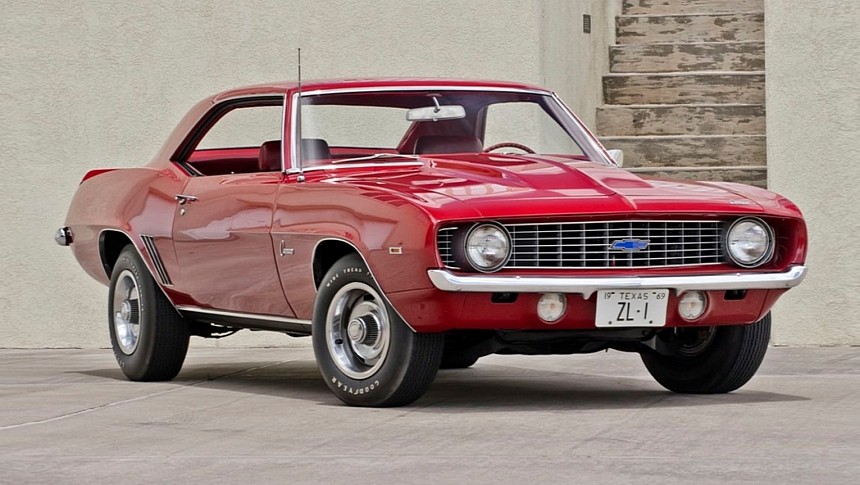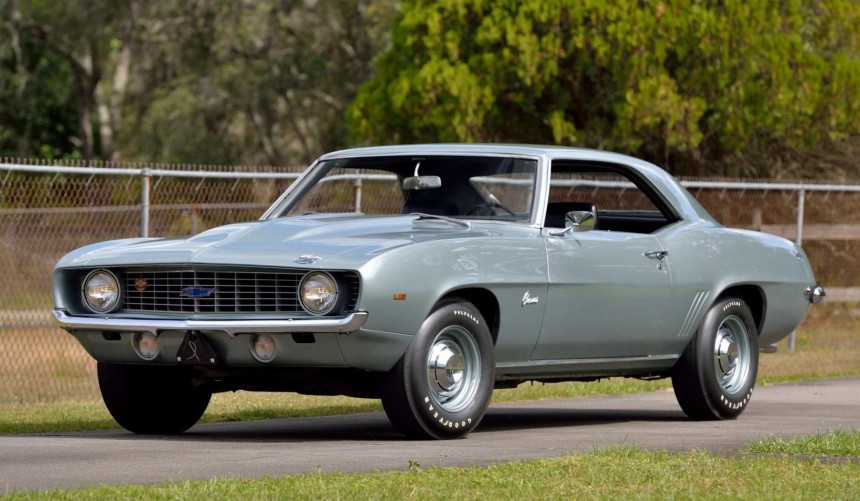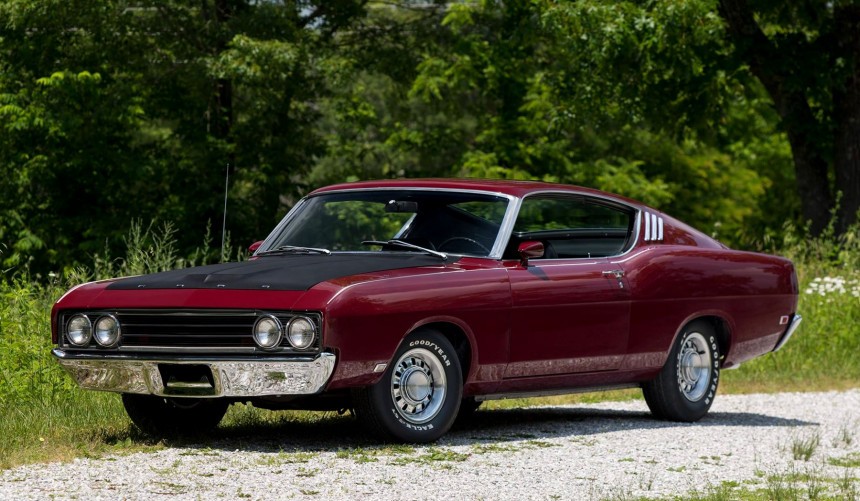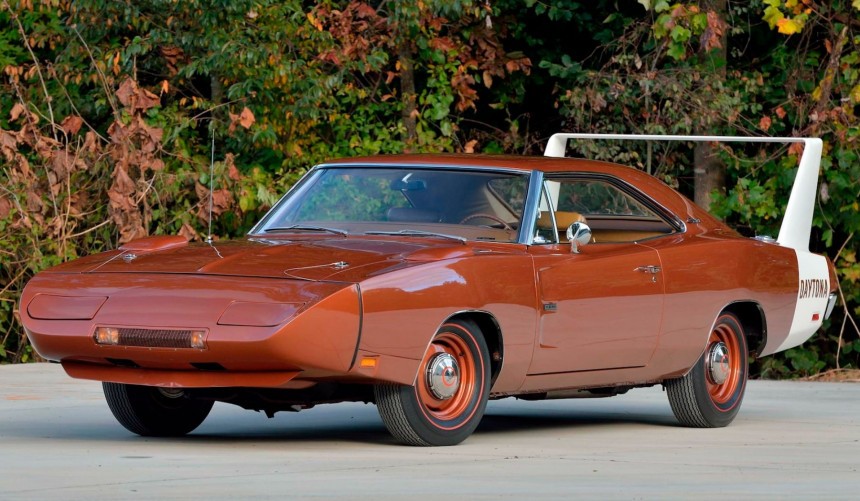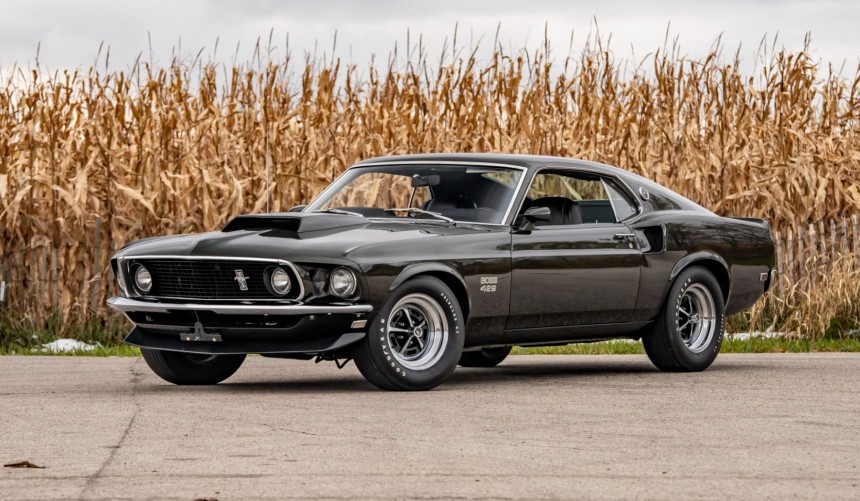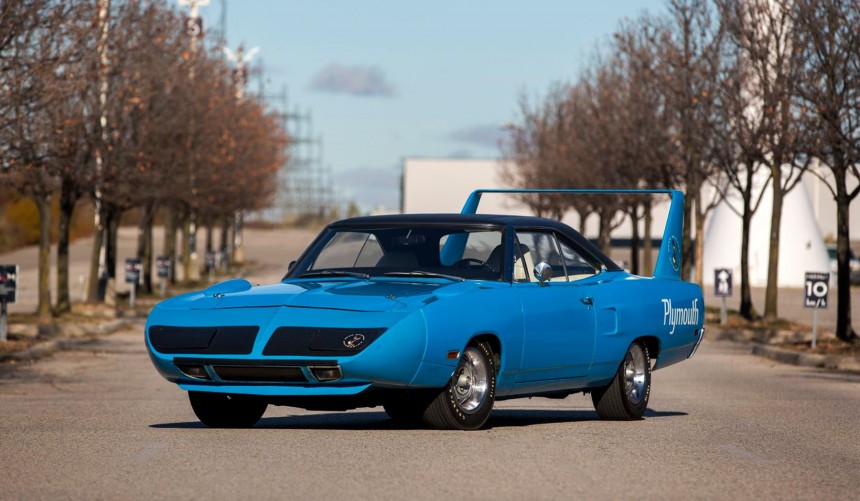Unlike most muscle cars from the golden age, these five legends were created specifically for motorsport homologation purposes.
For decades, the rulebooks of many motorsport competitions stated that, in order for a race car to compete, manufacturers had to build a minimum number of street-legal counterparts.
This requirement gave birth to legendary homologation specials like the
Audi Sport quattro, BMW M3 (E30), Porsche 911 GT1, Lancia Delta Integrale, or Subaru Impreza WRX.
During the sixties and seventies, American manufacturers were stuffing big and obscenely powerful V8s into the engine bays of intermediate (or smaller) models to quench buyers' thirst for performance.
Most of these models, which we now call muscle cars, had little to do with motorsport.
However, these five iconic muscle cars join the abovementioned models in the legendary homologation special club.
Unquestionably the most iconic Chevy muscle car of all time, the Camaro ZL-1 was conceived in 1969 by Fred Gibb and Dick Harrell.
The idea to stuff the all-aluminum, 427-ci (7.0-liter) ZL-1 V8 into the engine bay of the first-gen Camaro came after the innovative big-block proved its might in Jim Hall's Chaparral/Chevrolet Can-Am racecars.
Gibb and Harrell wanted to use the ZL-1-powered Camaro in the 1970 NHRA Pro Stock class, as it would give them a considerable weight advantage over HEMI-powered Mopars.
Therefore, the two made it happen by building an initial batch of fifty cars (required for homologation) through Chevy's COPO program.
Based on stock L78 SS, each Camaro became a ZL-1 after an arduous process that, apart from the engine, included adding a beefier suspension, a 4.10:1 rear axle with heat-treated ring and pinion, as well as a Posi-traction limited slip diff, power front disc brakes, and a special steel hood.
The lightweight, 500-pound (226.8-kg) aluminum big block was rated at 430 hp on paper, but on an actual dyno, it delivered around 550 horses.
In the end, 69 examples were built, each selling for a base price that started at $7,200 ($60,360 in 2023 dollars). Though built for the drag strip, these cars were fully street-legal.
Besides kicking Ferrari's behind at Le Mans, Ford was also looking to dominate the NASCAR Grand National series on home turf during the second part of the 1960s.
In 1967, the Blue Oval managed to end Chrysler's short reign of dominance thanks to the driving heroics of David Pearson and the newly-redesigned Torino fastback (aka SportsRoof).
For the following season, Ford and its factory-backed Holman-Moody team decided that the best way to defend their title was to improve the Torino's aerodynamics even further.
With that in mind, they redesigned the car's front end and then built the required 500 street-legal units of what became known as the 1969 Ford Torino Talladega.
While the race version, which ended up dominating the season, was powered by the Boss 429, the street-legal cars received a 335-hp 428 Cobra Jet, as Ford chose to homologate the Boss engine separately, in the more-popular Mustang.
With the distinct front fascia, blacked-out hood, and special Ford T badges, the Talladega was eventually built in 754 road-worthy examples throughout the 1969 model year.
It was joined on the track and street by a nearly identical Mercury version dubbed Cyclone Spoiler II.
In response to the aerodynamically efficient 1968 Torino fastback and the upcoming Talladega, the Mopar camp devised its own aero car for 1969.
But, despite breaking speed records, the new Charger Daytona ultimately failed to stop the redesigned Torino from defending its title.
The street cars required to gain homologation were based on the stock Charger R/T, but, like the race cars, they received extensive bodywork modifications.
These included a custom sheet-metal "nose cone" with pop-up headlights, redesigned front fenders and hood, a "window cap" fitted atop the original window to improve airflow, and last but not least, a humongous, 23-inch-tall (58.4 cm) rear wing.
Like the standard R/T, the Daytona came with a standard 440-ci (7.2-liter) Magnum rated at 390 hp, but potential buyers could get the optional, 425-hp NASCAR-derived 426-ci (7.0-liter) street HEMI.
Today, surviving Charger Daytonas are some of the most sought-after muscle cars ever built, but back in 1969, dealers struggled to sell the cars as potential buyers deemed them extremely ugly.
By 1968, Ford's venerable 429-ci (7.0-liter) "side-oiler" had served its purpose in various competitions, including NASCAR.
For its NASCAR program, the Blue Oval decided to replace the old 429 with a new HEMI slayer, which they christened Boss 429.
However, instead of homologating the V8 for the 1969 season inside the engine bay of the Torino Talladega, the company decided to make it available to the public in the popular Mustang range.
Based on stock 'Stangs modified to accept the humongous engine by experts Kar Kraft, the Boss 429 model was easily distinguishable from its counterparts thanks to a bespoke hood adorned with a big, functional scoop.
The model also received several upgrades, including a sturdier suspension system with a rear anti-roll bar, an oil cooler, and a 3.91-ratio rear end with a Traction-Lock limited slip diff.
Thanks to the race-bred engine that could make 375 hp, this homologation special was the most powerful street-legal Mustang ever built at the time of its introduction.
Available during the 1969 and 1970 model years, the Boss 429 was produced in 1,359 units. Today, surviving examples are some of the most expensive classic Fords that money can buy.
Even if the Charger Daytona couldn't stop Ford from defending its NASCAR title in 1969, the Mopar camp didn't give up on its aero design and elected to improve it.
Since the rivaling Talladega program managed to pry Richard Petty away from Plymouth in 1969, the division set about to create a new aero car, which convinced the legendary driver to rejoin the team.
Based on the Road Runner, the new Winged Warrior, officially called Superbird, managed to dominate the 1970 season, earning Plymouth and Bobby Isaac the title.
As was the case with the other NASCAR homologation specials on this list, a street-legal Superbird was sold to the general public.
Although very similar to the Charger Daytona, the Plymouth featured numerous differences like a vinyl top, a less pointy nose, fenders without air scoops, and a rear spoiler that tilted towards the rear a little more.
Though it also came standard with a 440 Magnum (375 hp) or an optional 426 HEMI, the Superbird could also be had with the 390-hp 440 Six-Barrel.
Available only during the 1970 model year, the Superbird was also a relatively tough sell for Plymouth dealers, yet 1,920 units were produced, almost three times more than the Charger Daytona.
Today, HEMI-powered Superbirds are among the most highly-valued muscle cars from the golden age, with highly original examples going for seven figures.
This requirement gave birth to legendary homologation specials like the
Audi Sport quattro, BMW M3 (E30), Porsche 911 GT1, Lancia Delta Integrale, or Subaru Impreza WRX.
During the sixties and seventies, American manufacturers were stuffing big and obscenely powerful V8s into the engine bays of intermediate (or smaller) models to quench buyers' thirst for performance.
Most of these models, which we now call muscle cars, had little to do with motorsport.
However, these five iconic muscle cars join the abovementioned models in the legendary homologation special club.
1969 Chevrolet Camaro ZL-1
The idea to stuff the all-aluminum, 427-ci (7.0-liter) ZL-1 V8 into the engine bay of the first-gen Camaro came after the innovative big-block proved its might in Jim Hall's Chaparral/Chevrolet Can-Am racecars.
Gibb and Harrell wanted to use the ZL-1-powered Camaro in the 1970 NHRA Pro Stock class, as it would give them a considerable weight advantage over HEMI-powered Mopars.
Therefore, the two made it happen by building an initial batch of fifty cars (required for homologation) through Chevy's COPO program.
Based on stock L78 SS, each Camaro became a ZL-1 after an arduous process that, apart from the engine, included adding a beefier suspension, a 4.10:1 rear axle with heat-treated ring and pinion, as well as a Posi-traction limited slip diff, power front disc brakes, and a special steel hood.
The lightweight, 500-pound (226.8-kg) aluminum big block was rated at 430 hp on paper, but on an actual dyno, it delivered around 550 horses.
In the end, 69 examples were built, each selling for a base price that started at $7,200 ($60,360 in 2023 dollars). Though built for the drag strip, these cars were fully street-legal.
1969 Ford Torino Talladega
In 1967, the Blue Oval managed to end Chrysler's short reign of dominance thanks to the driving heroics of David Pearson and the newly-redesigned Torino fastback (aka SportsRoof).
For the following season, Ford and its factory-backed Holman-Moody team decided that the best way to defend their title was to improve the Torino's aerodynamics even further.
With that in mind, they redesigned the car's front end and then built the required 500 street-legal units of what became known as the 1969 Ford Torino Talladega.
While the race version, which ended up dominating the season, was powered by the Boss 429, the street-legal cars received a 335-hp 428 Cobra Jet, as Ford chose to homologate the Boss engine separately, in the more-popular Mustang.
With the distinct front fascia, blacked-out hood, and special Ford T badges, the Talladega was eventually built in 754 road-worthy examples throughout the 1969 model year.
It was joined on the track and street by a nearly identical Mercury version dubbed Cyclone Spoiler II.
1969 Dodge Charger Daytona
But, despite breaking speed records, the new Charger Daytona ultimately failed to stop the redesigned Torino from defending its title.
The street cars required to gain homologation were based on the stock Charger R/T, but, like the race cars, they received extensive bodywork modifications.
These included a custom sheet-metal "nose cone" with pop-up headlights, redesigned front fenders and hood, a "window cap" fitted atop the original window to improve airflow, and last but not least, a humongous, 23-inch-tall (58.4 cm) rear wing.
Like the standard R/T, the Daytona came with a standard 440-ci (7.2-liter) Magnum rated at 390 hp, but potential buyers could get the optional, 425-hp NASCAR-derived 426-ci (7.0-liter) street HEMI.
Today, surviving Charger Daytonas are some of the most sought-after muscle cars ever built, but back in 1969, dealers struggled to sell the cars as potential buyers deemed them extremely ugly.
1969-1970 Ford Mustang Boss 429
For its NASCAR program, the Blue Oval decided to replace the old 429 with a new HEMI slayer, which they christened Boss 429.
However, instead of homologating the V8 for the 1969 season inside the engine bay of the Torino Talladega, the company decided to make it available to the public in the popular Mustang range.
Based on stock 'Stangs modified to accept the humongous engine by experts Kar Kraft, the Boss 429 model was easily distinguishable from its counterparts thanks to a bespoke hood adorned with a big, functional scoop.
The model also received several upgrades, including a sturdier suspension system with a rear anti-roll bar, an oil cooler, and a 3.91-ratio rear end with a Traction-Lock limited slip diff.
Thanks to the race-bred engine that could make 375 hp, this homologation special was the most powerful street-legal Mustang ever built at the time of its introduction.
Available during the 1969 and 1970 model years, the Boss 429 was produced in 1,359 units. Today, surviving examples are some of the most expensive classic Fords that money can buy.
1970 Plymouth Superbird
Since the rivaling Talladega program managed to pry Richard Petty away from Plymouth in 1969, the division set about to create a new aero car, which convinced the legendary driver to rejoin the team.
Based on the Road Runner, the new Winged Warrior, officially called Superbird, managed to dominate the 1970 season, earning Plymouth and Bobby Isaac the title.
As was the case with the other NASCAR homologation specials on this list, a street-legal Superbird was sold to the general public.
Although very similar to the Charger Daytona, the Plymouth featured numerous differences like a vinyl top, a less pointy nose, fenders without air scoops, and a rear spoiler that tilted towards the rear a little more.
Though it also came standard with a 440 Magnum (375 hp) or an optional 426 HEMI, the Superbird could also be had with the 390-hp 440 Six-Barrel.
Available only during the 1970 model year, the Superbird was also a relatively tough sell for Plymouth dealers, yet 1,920 units were produced, almost three times more than the Charger Daytona.
Today, HEMI-powered Superbirds are among the most highly-valued muscle cars from the golden age, with highly original examples going for seven figures.
